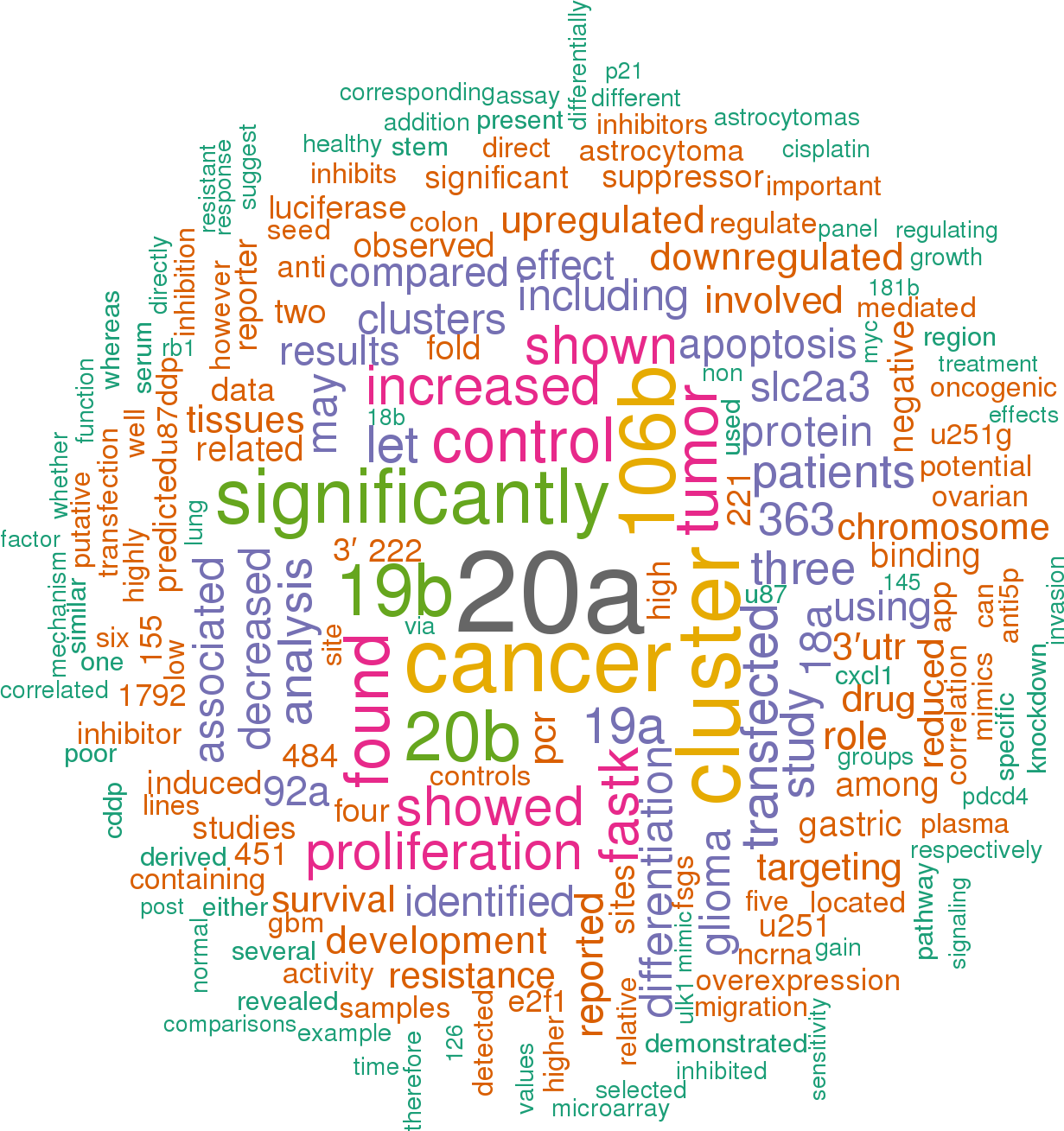Accession
MI0000113
Symbol
HGNC:
MIR106A
Description
Homo sapiens
hsa-mir-106a precursor miRNA mir-17
Gene
family?
family?
RF00051;
mir-17
Summary
Caution, this is an AI generated summary based on literature. This may have errors. ?
Hsa-mir-106a is a microRNA implicated in the regulation of gene expression and has been associated with the modulation of cancer cell sensitivity to radiation [PMC3852212]. The HPV E7/DGCR8 complex may suppress RUNX3 expression and concurrently increase radiation sensitivity by upregulating hsa-mir-106a [PMC7770216]. However, the statement that target genes of hsa-mir-106a, such as BDH1, UPP1, TUSC2, and KMO, exhibit an inverse expression pattern compared to hsa-mir-106a itself in patients with a shorter survival span is incorrect [PMC3852212]. Therefore, the claim that an inverse relationship indicates hsa-mir-106a may downregulate these genes, contributing to increased radiation sensitivity, is not supported by the provided references.
Literature search

256 open access papers mention hsa-mir-106a
(962 sentences)
(962 sentences)
Sequence
46696
reads,
353
reads per million, 148 experiments
ccuuggccauguAAAAGUGCUUACAGUGCAGGUAGcuuuuugagaucuaCUGCAAUGUAAGCACUUCUUACauuaccaugg
((.(((..(((((((((((((((((.(((((.(((.(((...))).)))))))).))))))))))).))))))..))).))
((.(((..(((((((((((((((((.(((((.(((.(((...))).)))))))).))))))))))).))))))..))).))
Structure
u cc - G G c u cc ugg auguAA AAGUGCUUACA UGCAG UAG uuu || ||| |||||| ||||||||||| ||||| ||| ||| u gg acc uaCAUU UUCACGAAUGU ACGUC auc aga u au C A - u g
Annotation confidence
High
Do you think this miRNA is real?
Comments
This miRNA was not cloned in reference [1], rather it was identified by homology to miR-91 (MIR:MI0000071). This sequence is localised to chromosome X and was named mir-106-X in [1]. Mouse and human miR-106a (MIR:MI0000406 and MIR:MI0000113) differ at two positions but the precursor sequences are clearly closely related. The sequences are also related to mir-17 (MIR:MI0000071 and MIR:MI0000687). The mature sequence shown here represents the most commonly cloned form from large-scale cloning studies [3].
Genome context
chrX: 134170198-134170278 [-]
Clustered miRNAs
5 other miRNAs are < 10 kb from hsa-mir-106a
| Name | Accession | Chromosome | Start | End | Strand | Confidence |
|---|
Disease association
hsa-mir-106a is associated with one or more human diseases in the Human microRNA Disease Database
| Disease | Description | Category | PubMed ID |
|---|
Biological pathways
hsa-mir-106a is involved in one or more biological pathways:
(Source: Reactome)
(Source: Reactome)
Biological reactions
hsa-mir-106a is involved in one or more regulation/signalling events:
(Source: Reactome)
(Source: Reactome)
Mature hsa-miR-106a-5p
| Accession | MIMAT0000103 |
| Description | Homo sapiens hsa-miR-106a-5p mature miRNA |
| Sequence | 13 - AAAAGUGCUUACAGUGCAGGUAG - 35 |
| Evidence |
experimental
cloned [2-3] |
| Database links |



|
| Predicted targets |



|
Mature hsa-miR-106a-3p
| Accession | MIMAT0004517 |
| Description | Homo sapiens hsa-miR-106a-3p mature miRNA |
| Sequence | 50 - CUGCAAUGUAAGCACUUCUUAC - 71 |
| Evidence |
experimental
cloned [3] |
| Database links |



|
| Predicted targets |



|
References
|





